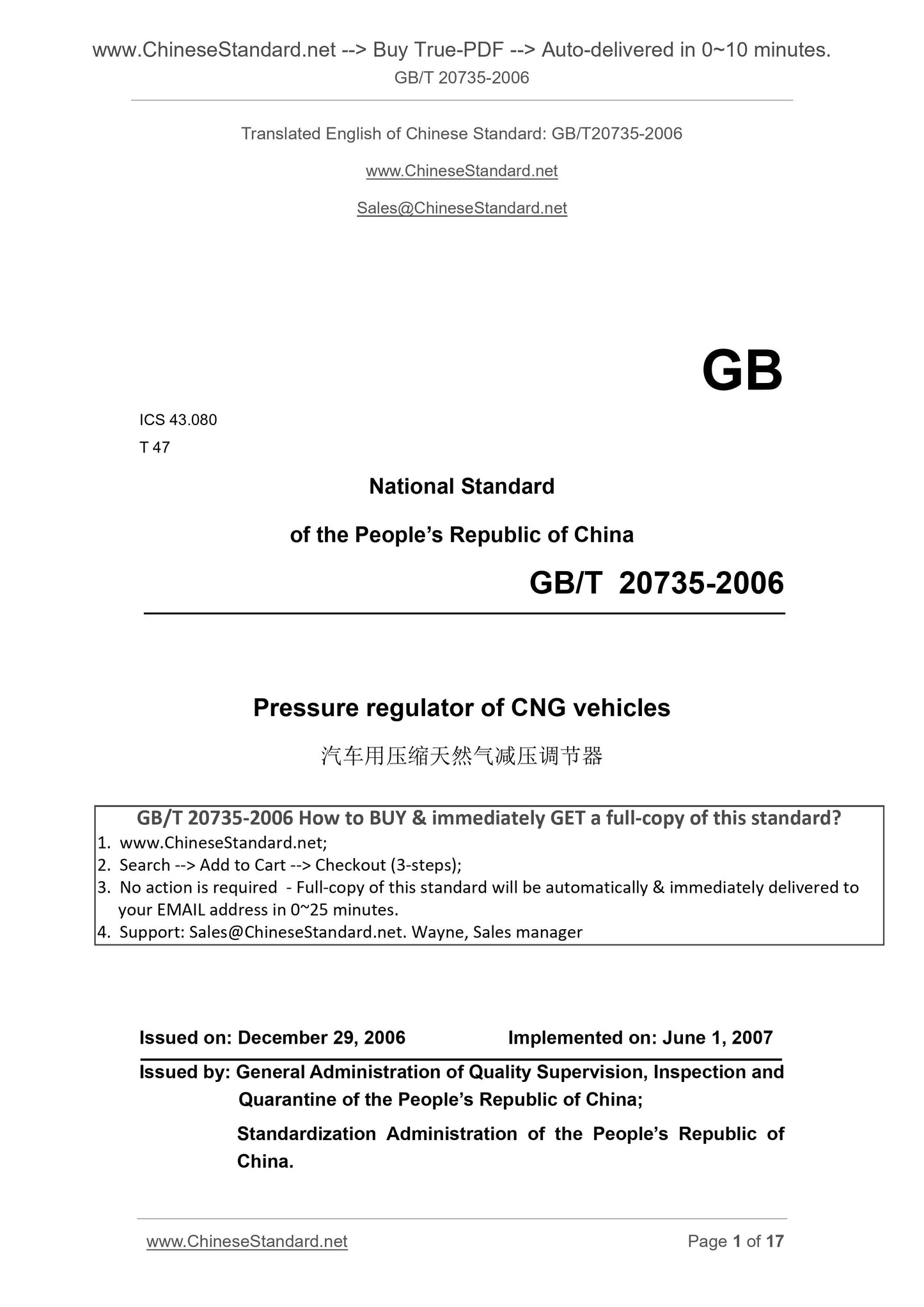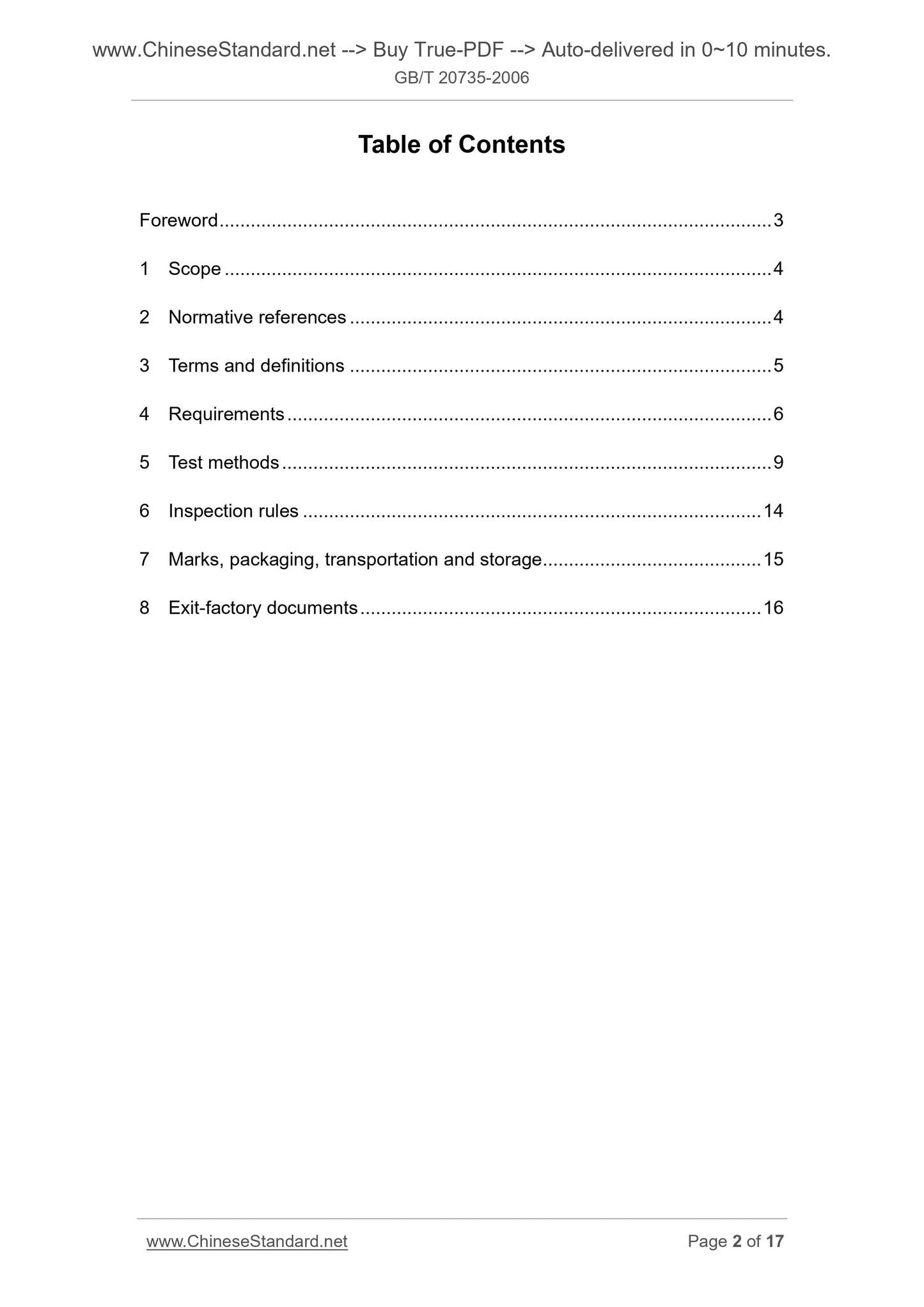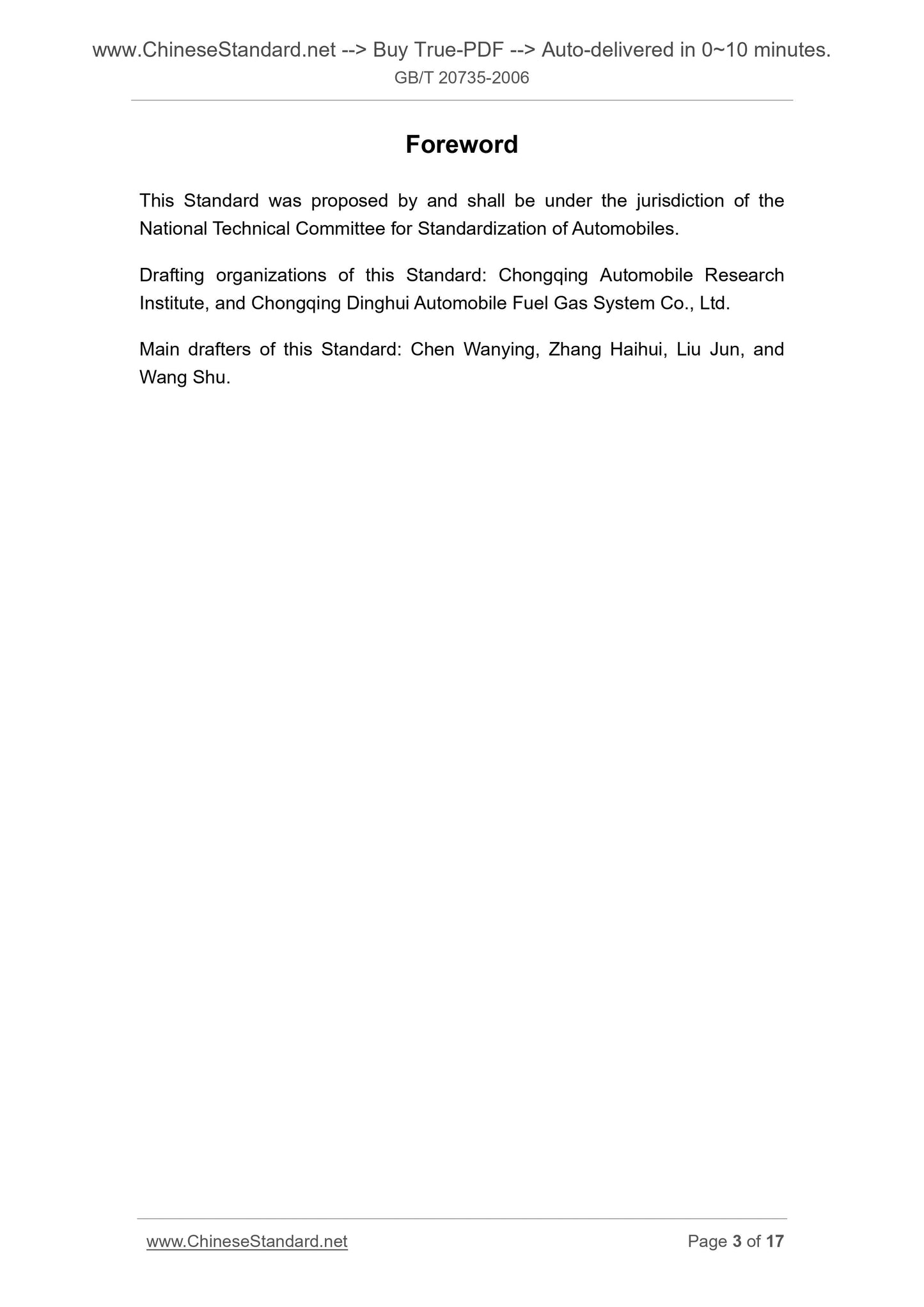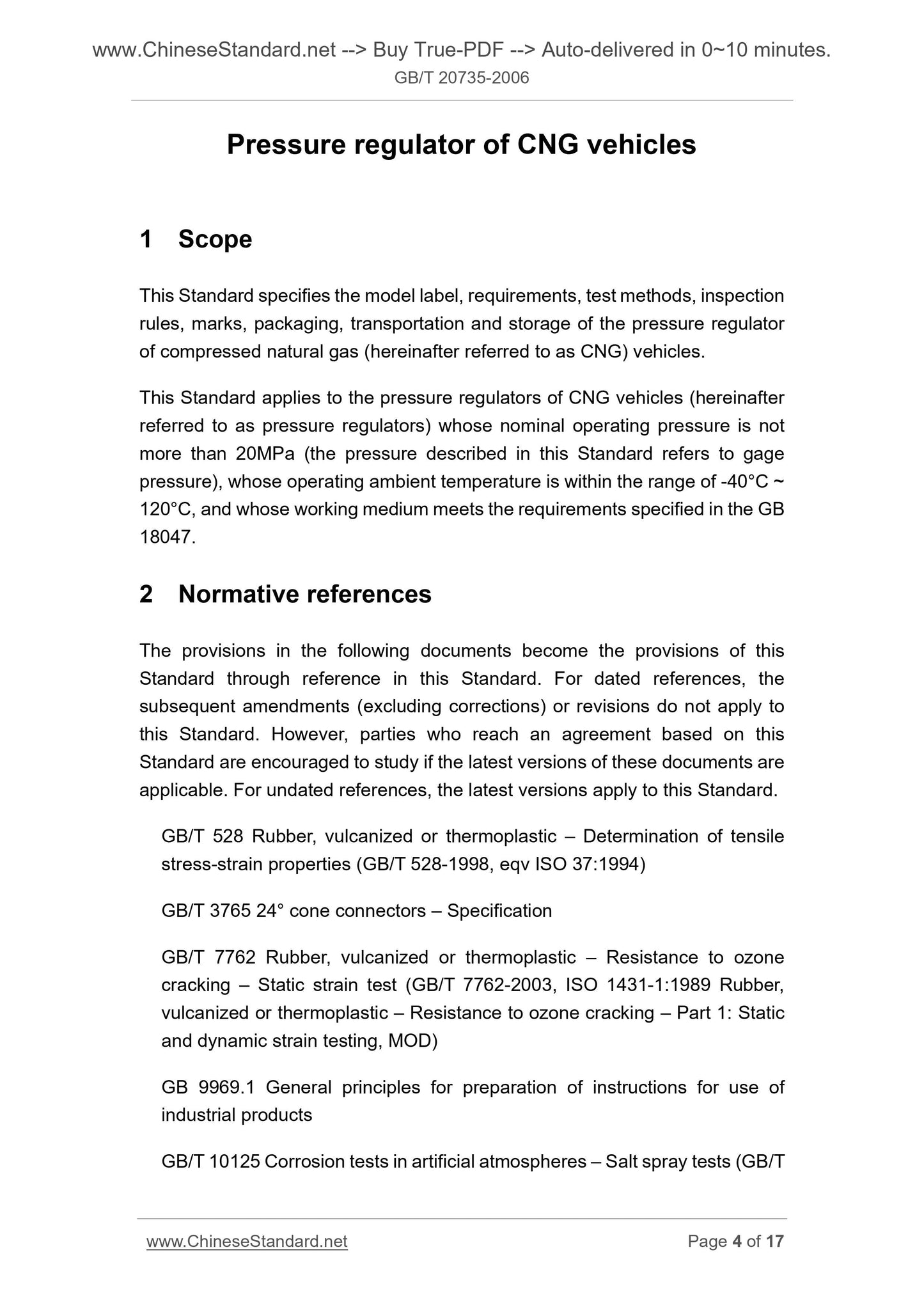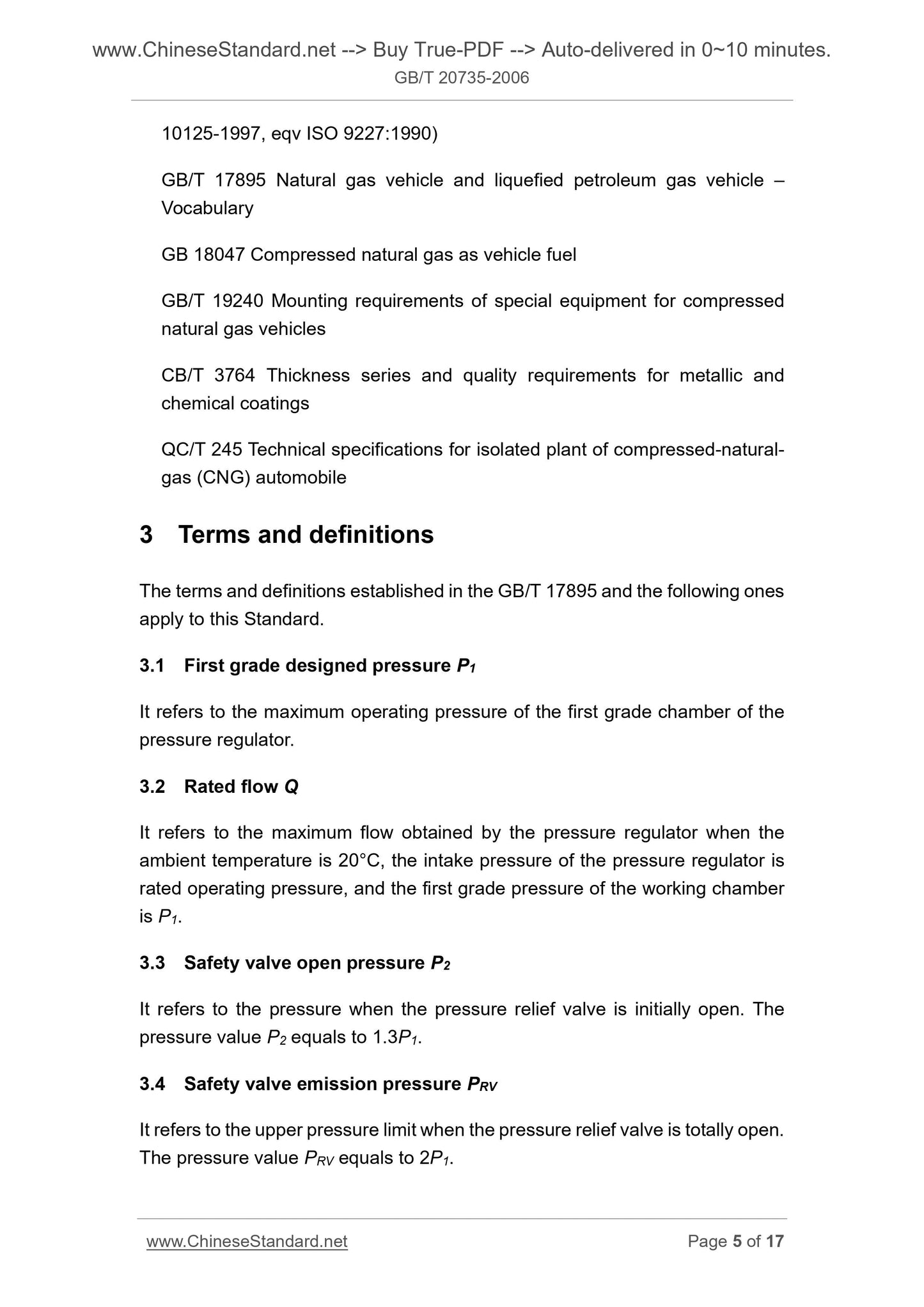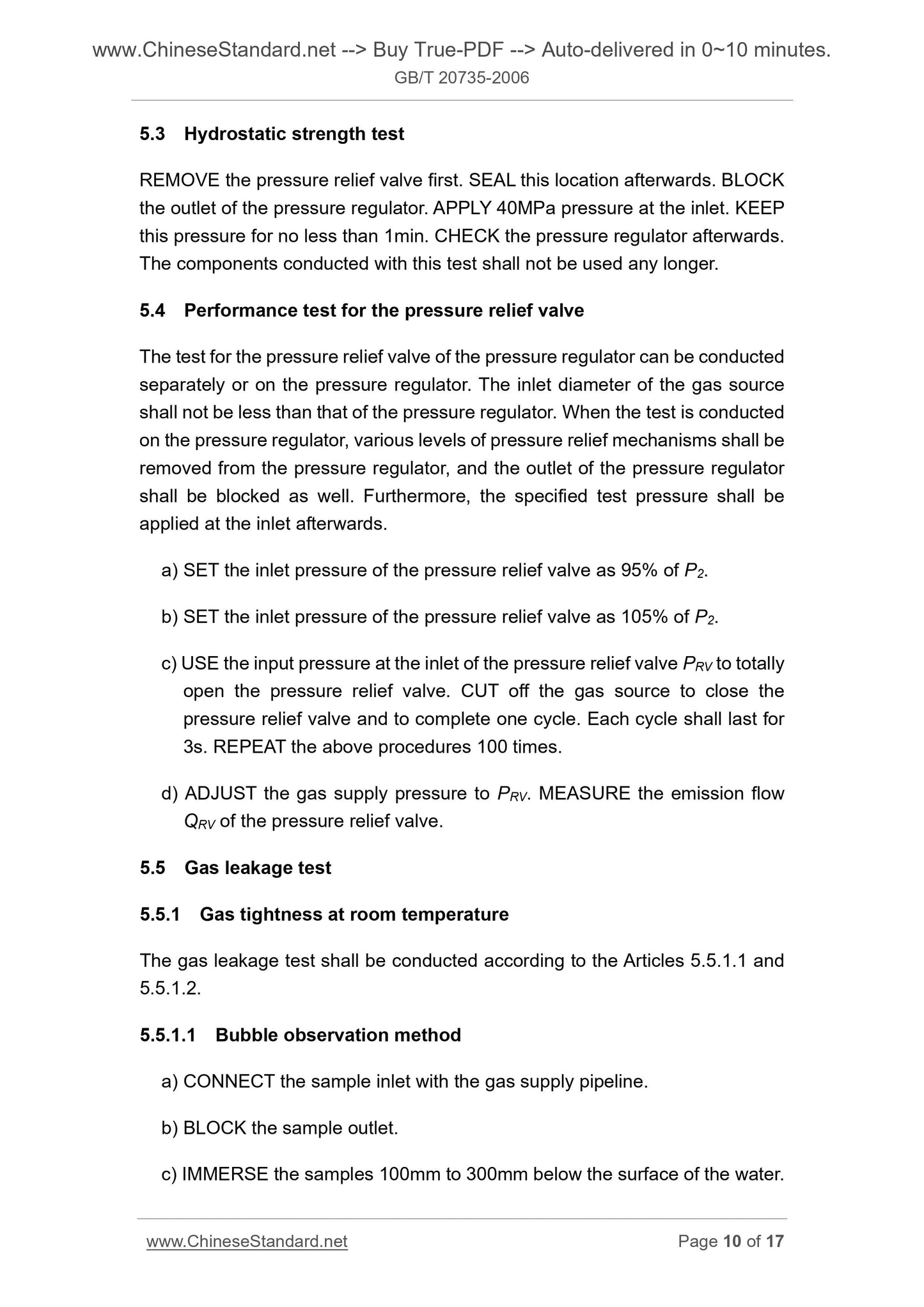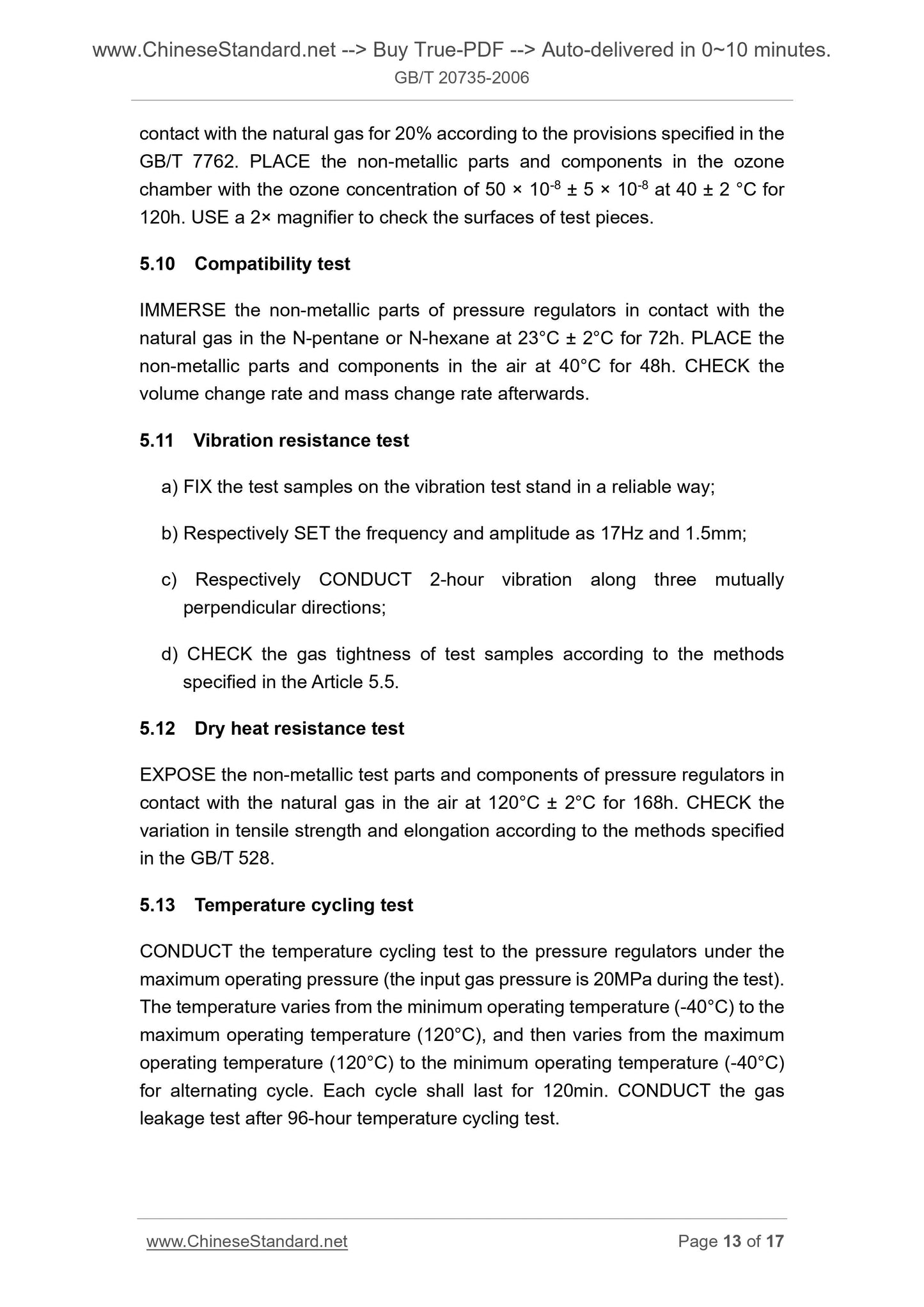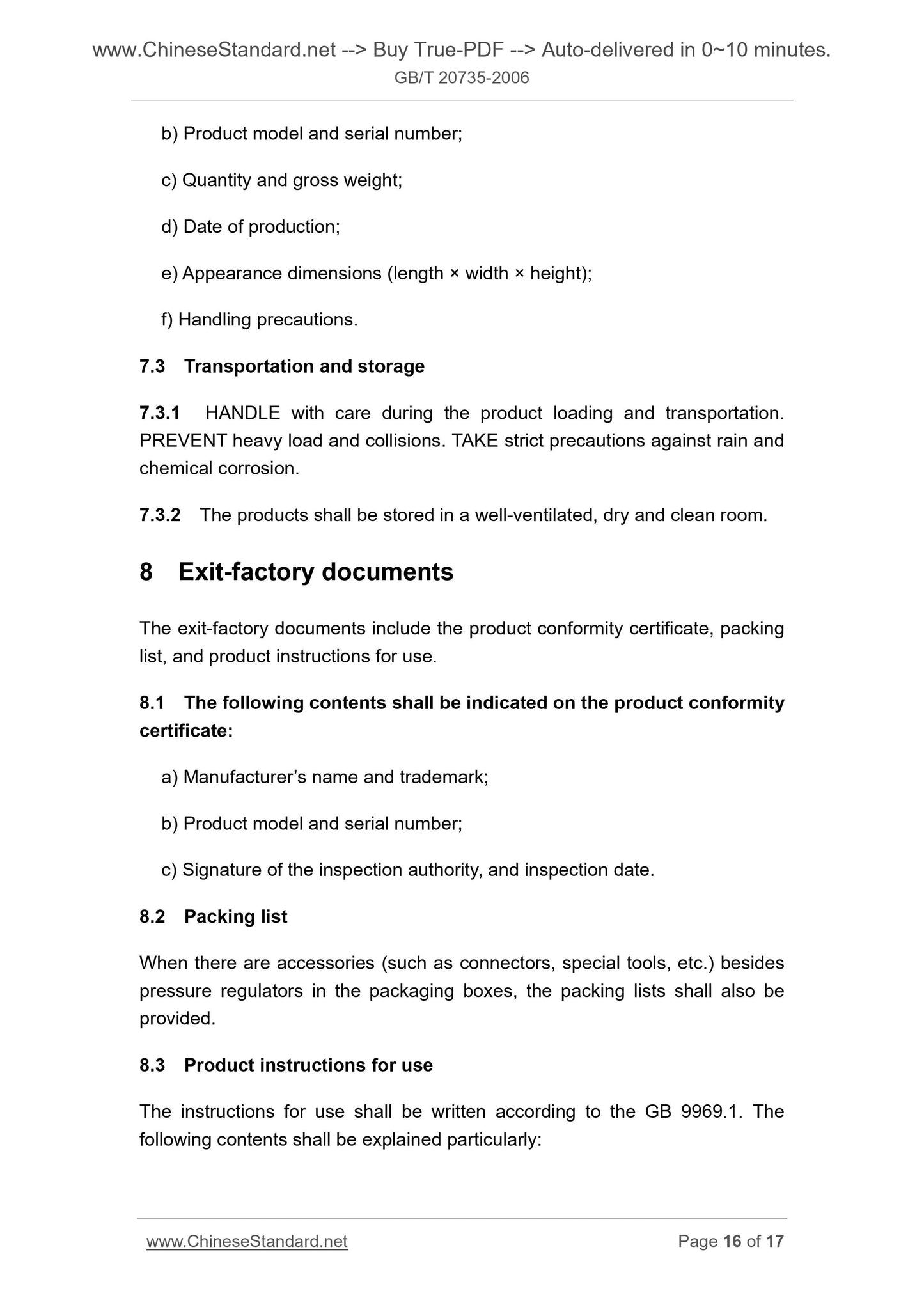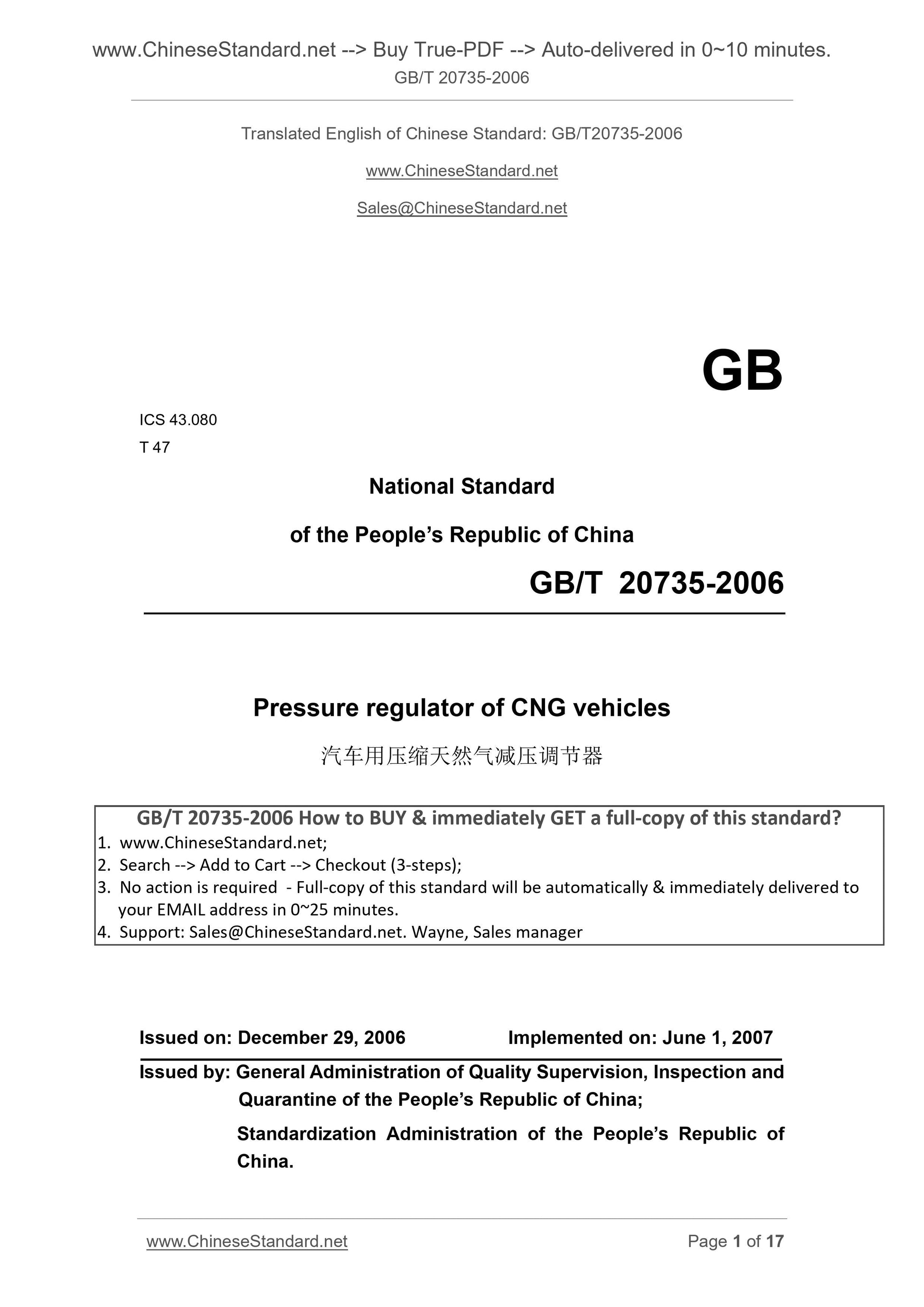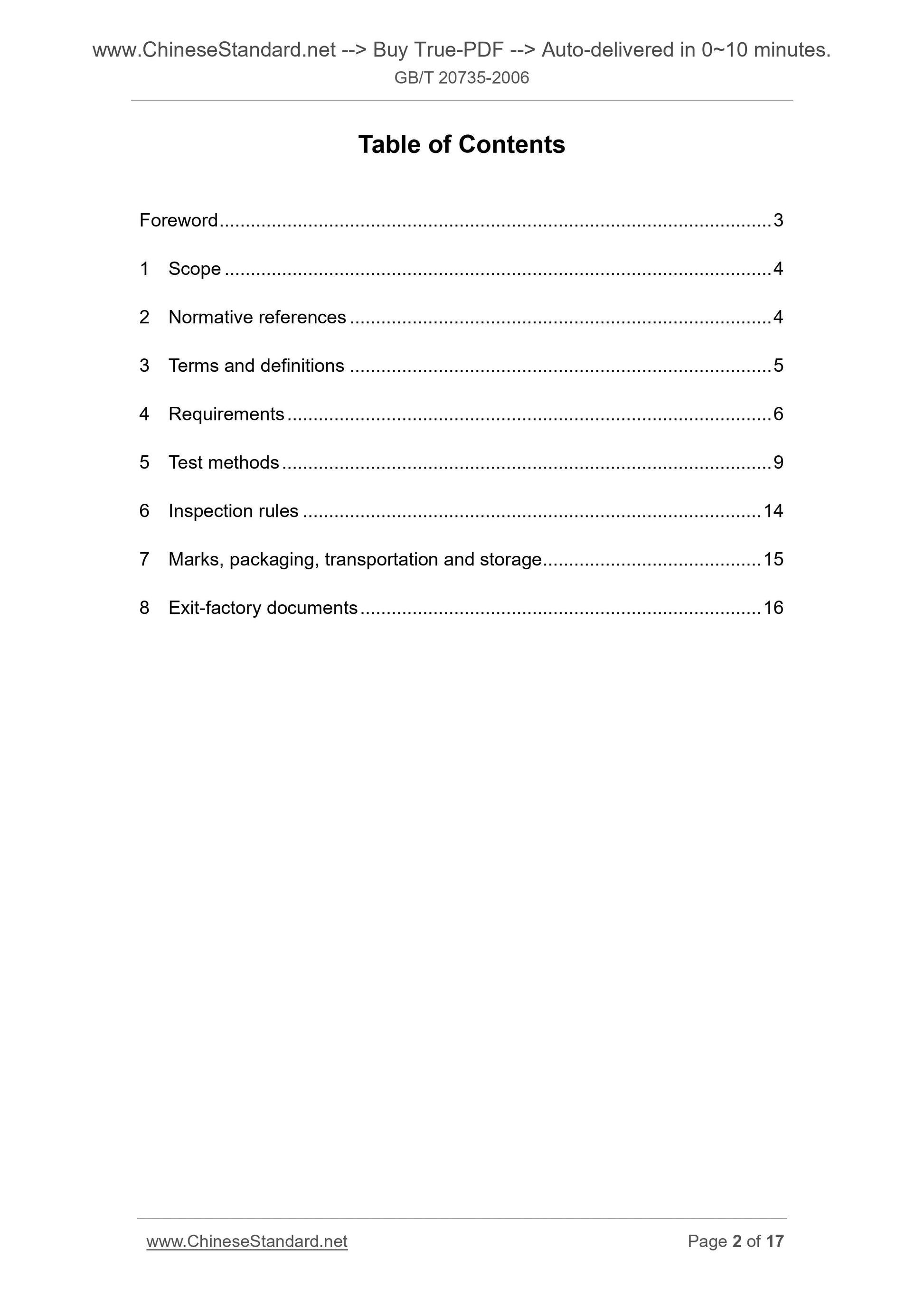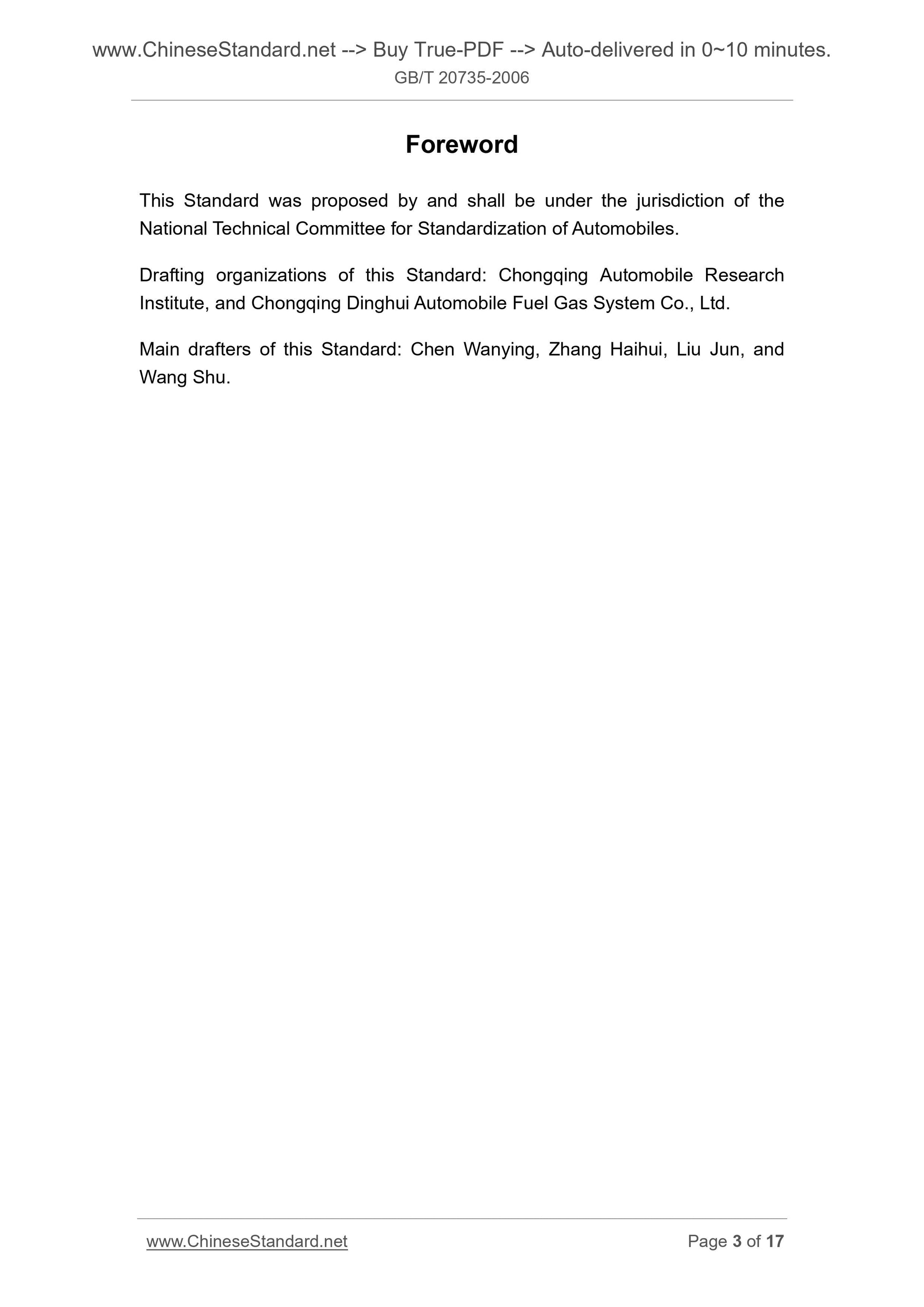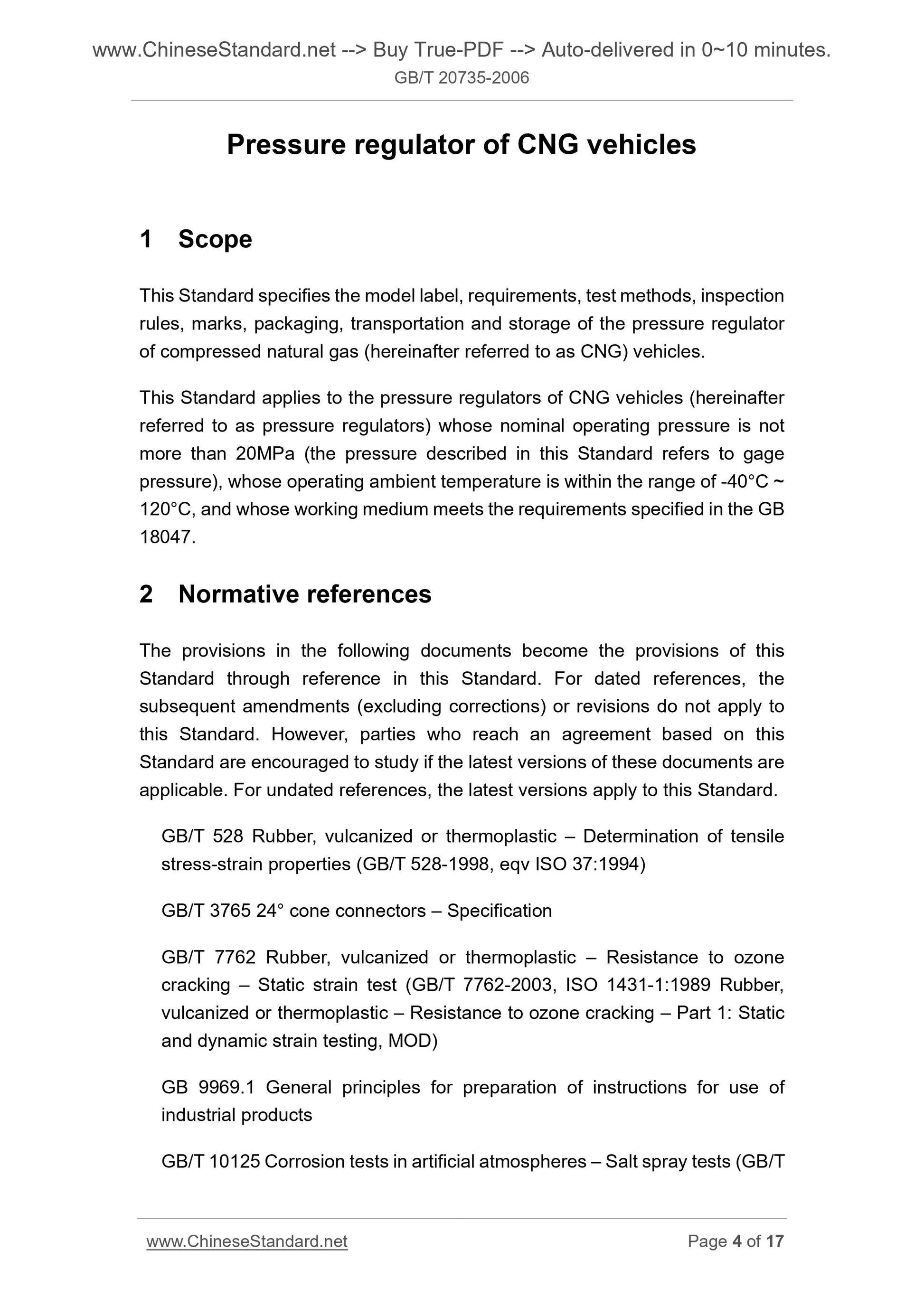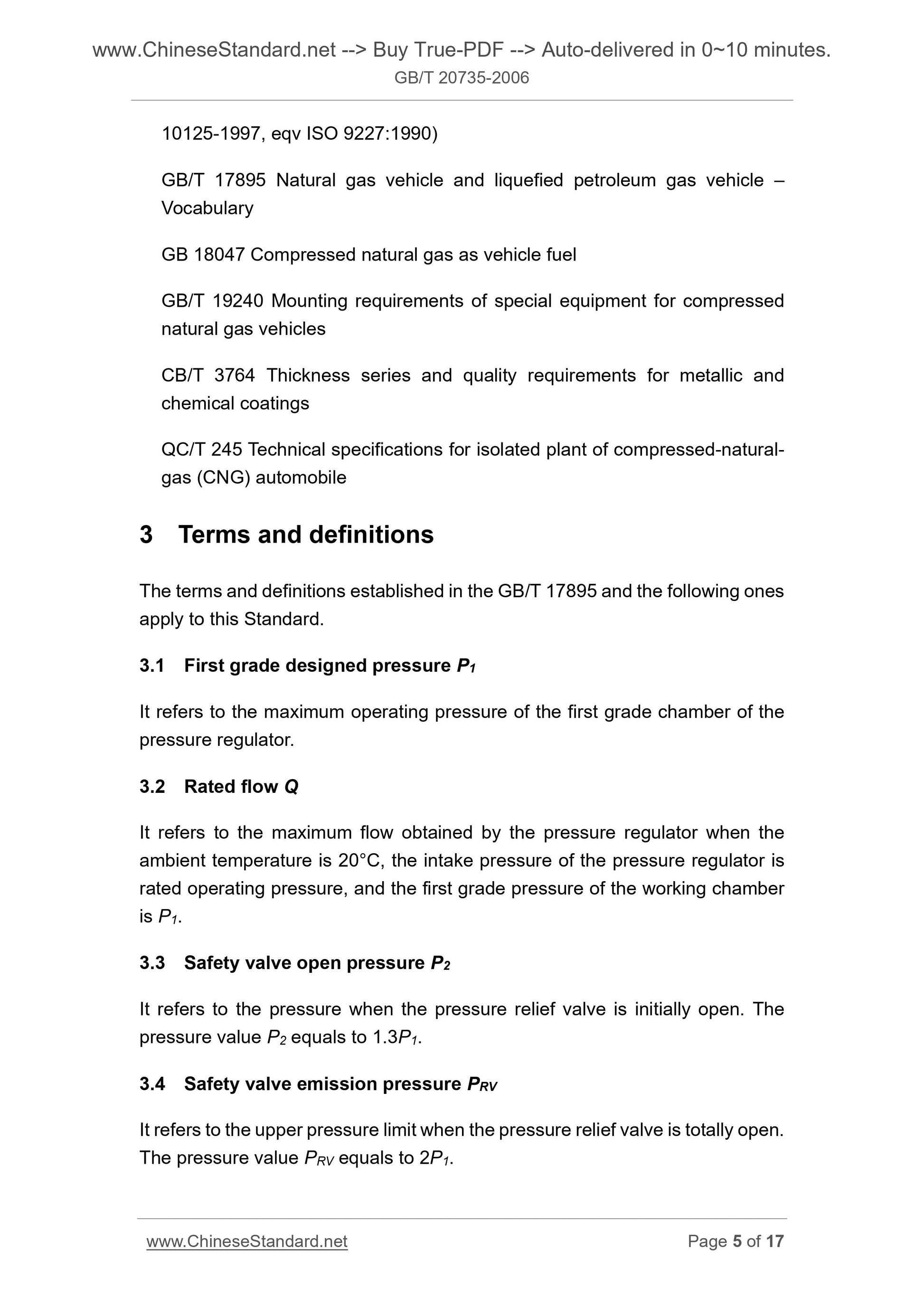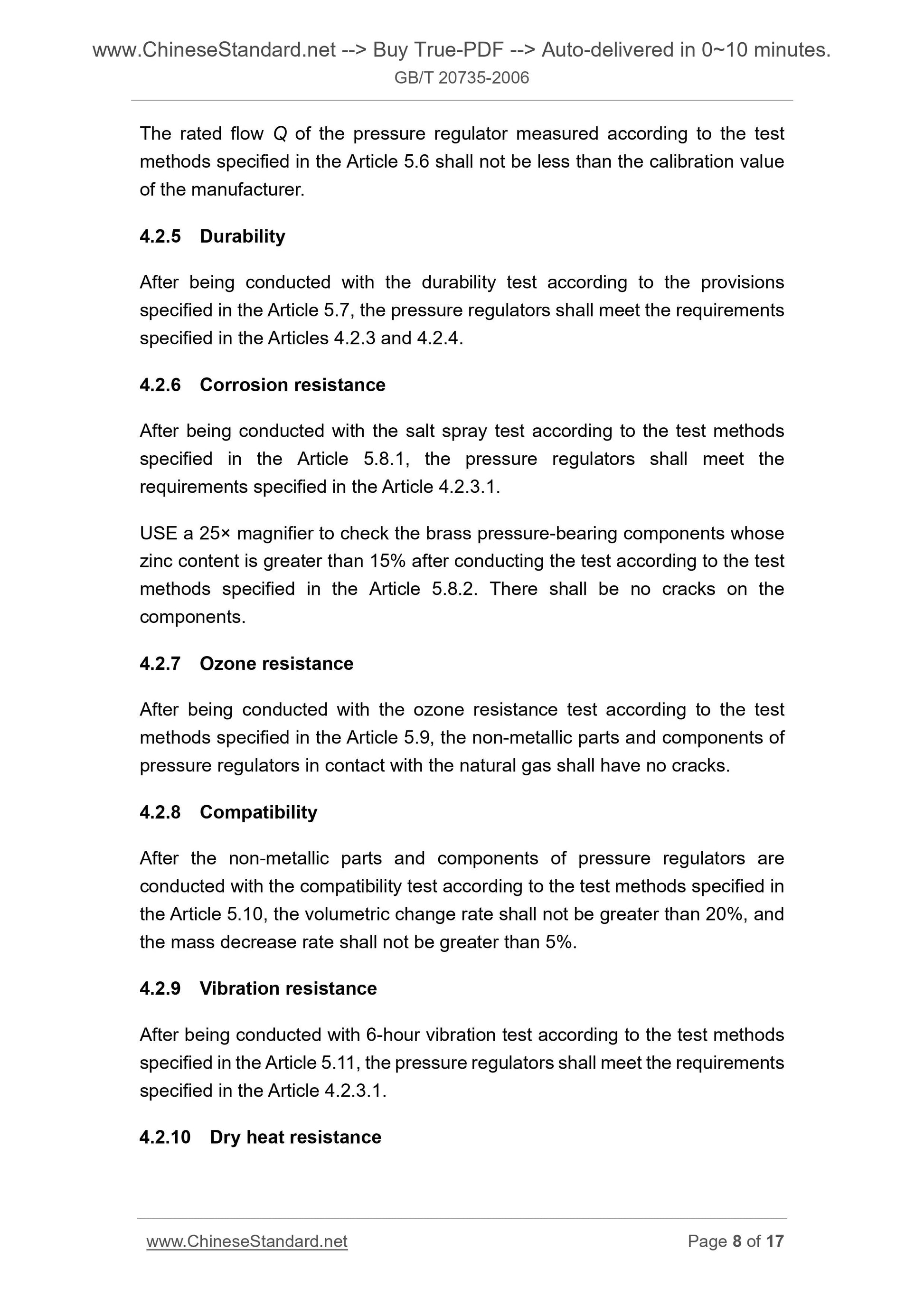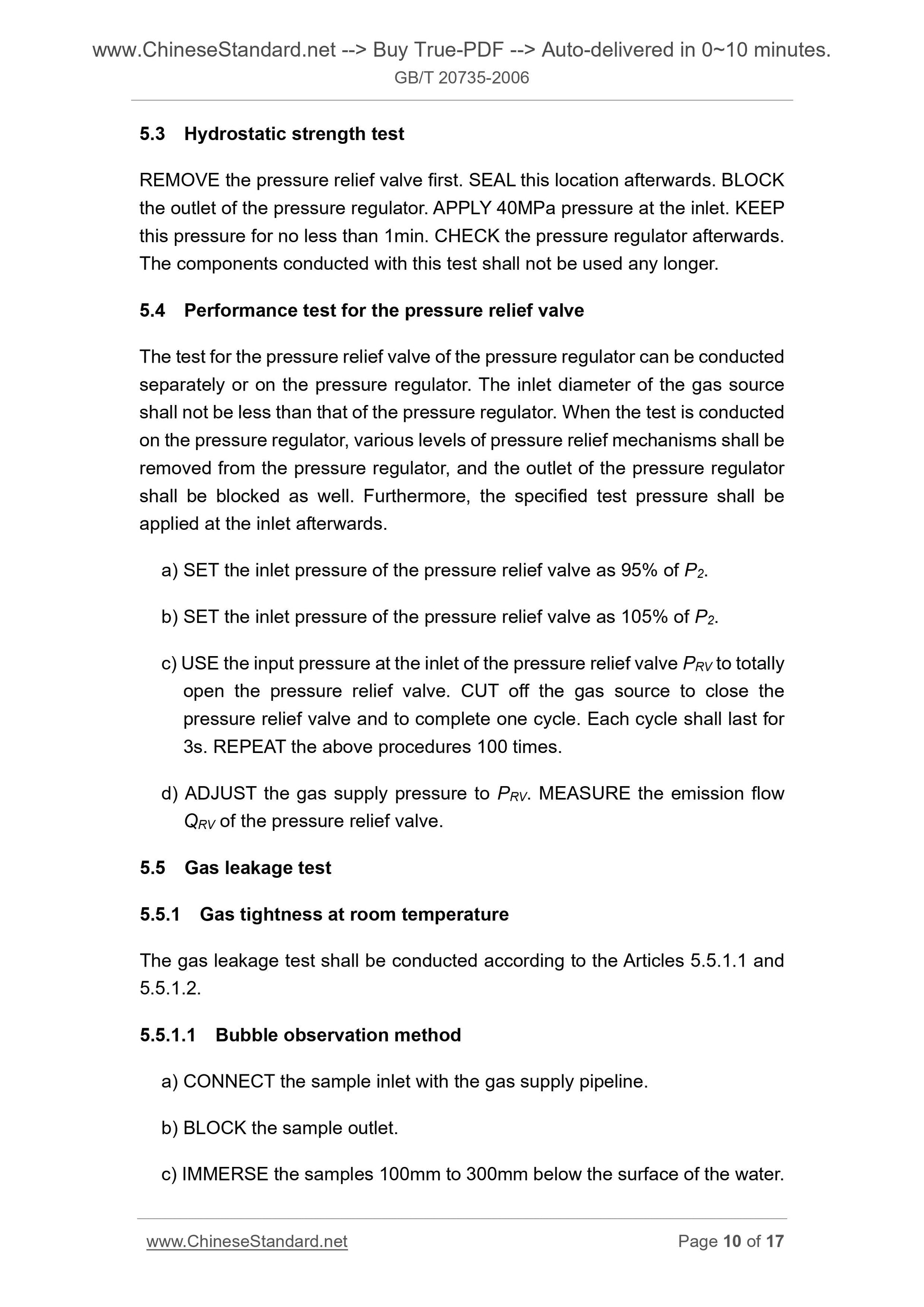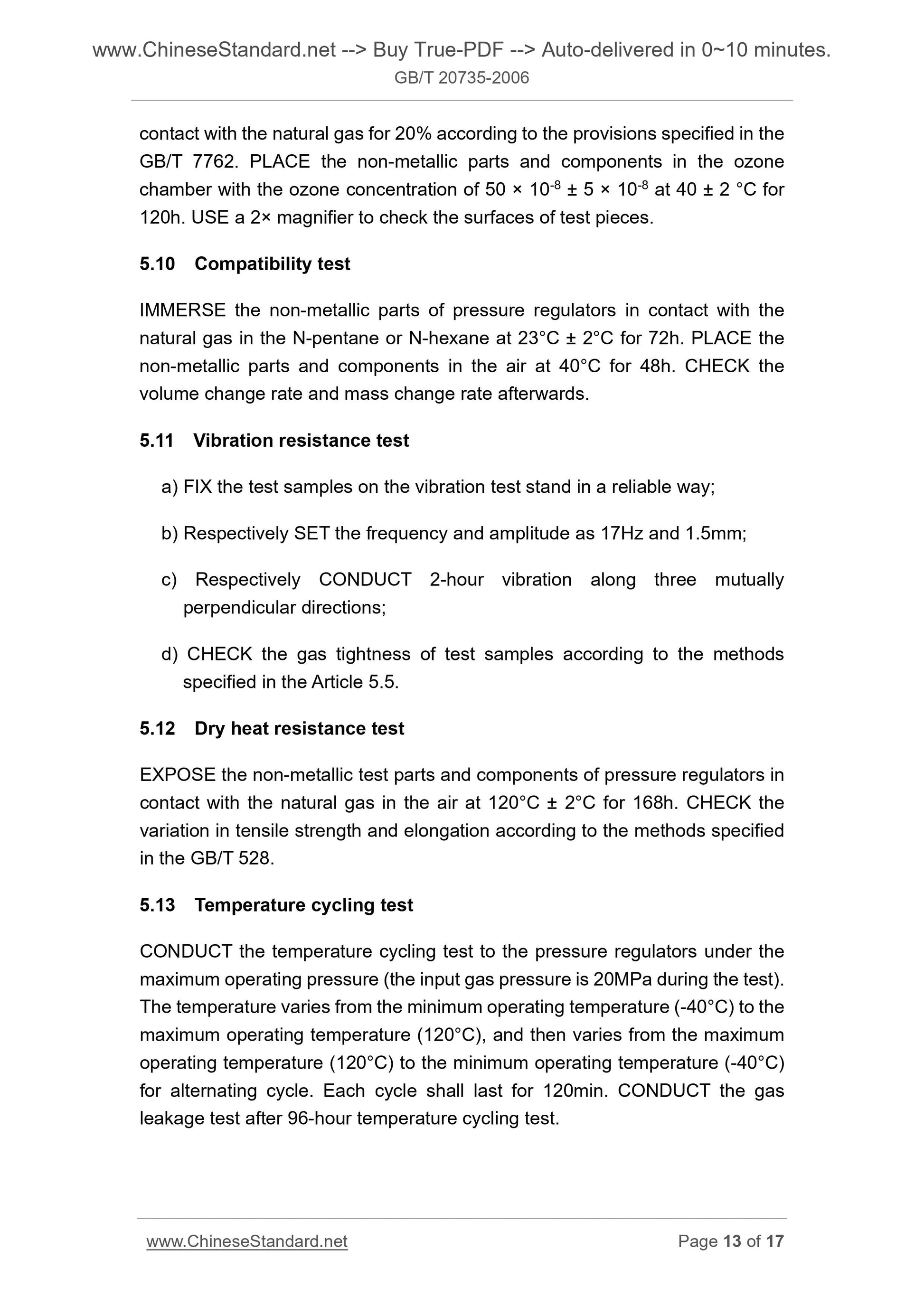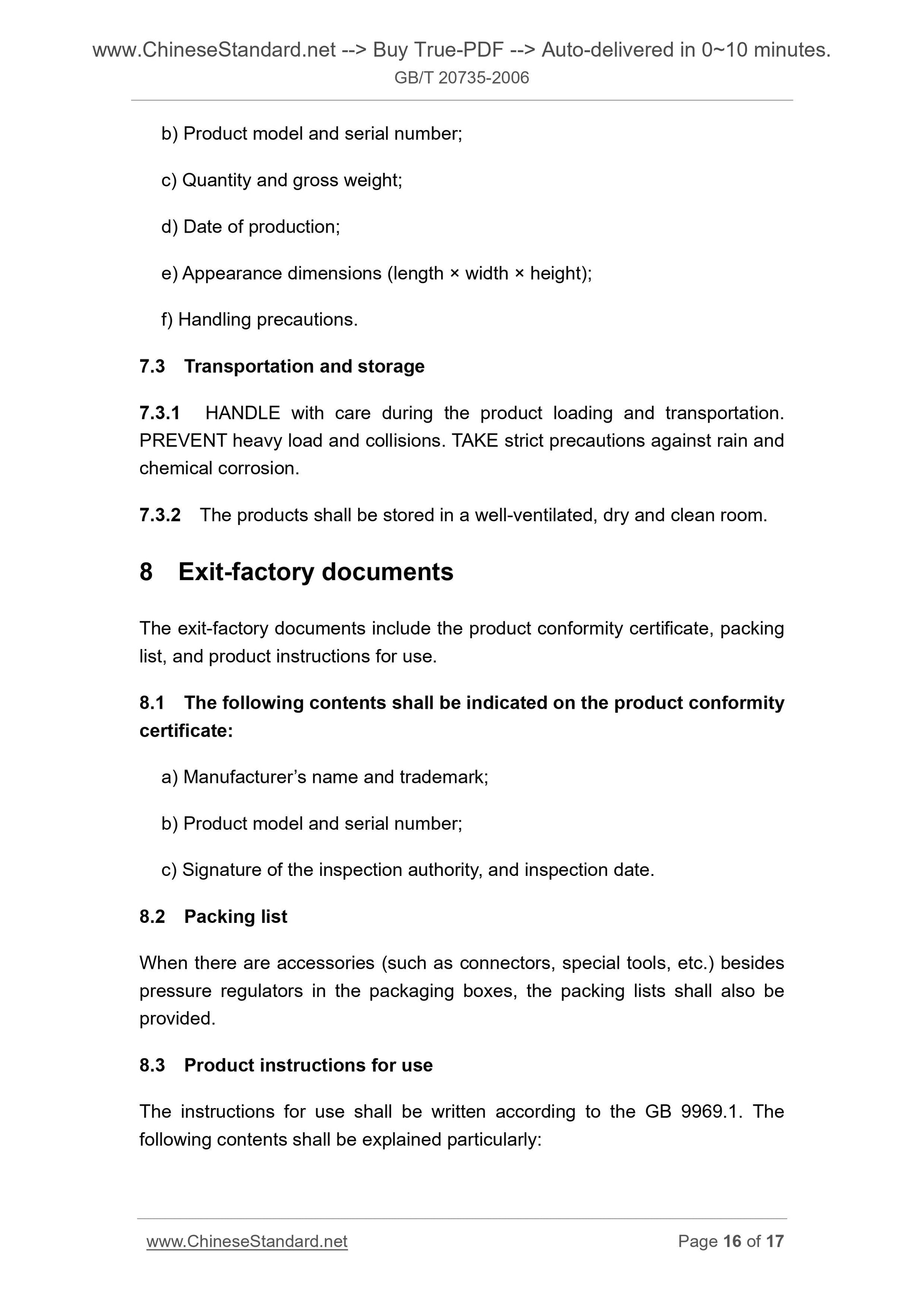1
/
of
9
www.ChineseStandard.us -- Field Test Asia Pte. Ltd.
GB/T 20735-2006 English PDF (GB/T20735-2006)
GB/T 20735-2006 English PDF (GB/T20735-2006)
Regular price
$85.00
Regular price
Sale price
$85.00
Unit price
/
per
Shipping calculated at checkout.
Couldn't load pickup availability
GB/T 20735-2006: Pressure regulator of CNG vehicles
Delivery: 9 seconds. Download (and Email) true-PDF + Invoice.Get Quotation: Click GB/T 20735-2006 (Self-service in 1-minute)
Newer / historical versions: GB/T 20735-2006
Preview True-PDF
Scope
This Standard specifies the model label, requirements, test methods, inspectionrules, marks, packaging, transportation and storage of the pressure regulator
of compressed natural gas (hereinafter referred to as CNG) vehicles.
This Standard applies to the pressure regulators of CNG vehicles (hereinafter
referred to as pressure regulators) whose nominal operating pressure is not
more than 20MPa (the pressure described in this Standard refers to gage
pressure), whose operating ambient temperature is within the range of -40°C ~
120°C, and whose working medium meets the requirements specified in the GB
18047.
Basic Data
| Standard ID | GB/T 20735-2006 (GB/T20735-2006) |
| Description (Translated English) | Pressure regulator of CNG vehicles |
| Sector / Industry | National Standard (Recommended) |
| Classification of Chinese Standard | T47 |
| Classification of International Standard | 43.080 |
| Word Count Estimation | 10,174 |
| Date of Issue | 2006-12-29 |
| Date of Implementation | 2007-06-01 |
| Regulation (derived from) | China National Standard Approval Announcement 2006 No.13 (Total No.100) |
| Issuing agency(ies) | General Administration of Quality Supervision, Inspection and Quarantine of the People's Republic of China, Standardization Administration of the People's Republic of China |
| Summary | This standard specifies the vehicle compressed natural gas (hereinafter referred to as CNG) pressure regulator model marks, requirements, test methods, inspection rules, signs, packaging, transportation and storage. This standard applies to the rated working pressure of not more than 20MPa (refer to the standard of the pressure gauge pressure), working environment temperature -40��C ~ +120��C, the working medium to comply with the requirements of GB 18047 decompression of compressed natural gas vehicle regulator (hereinafter referred to as pressure regulator). |
Share
